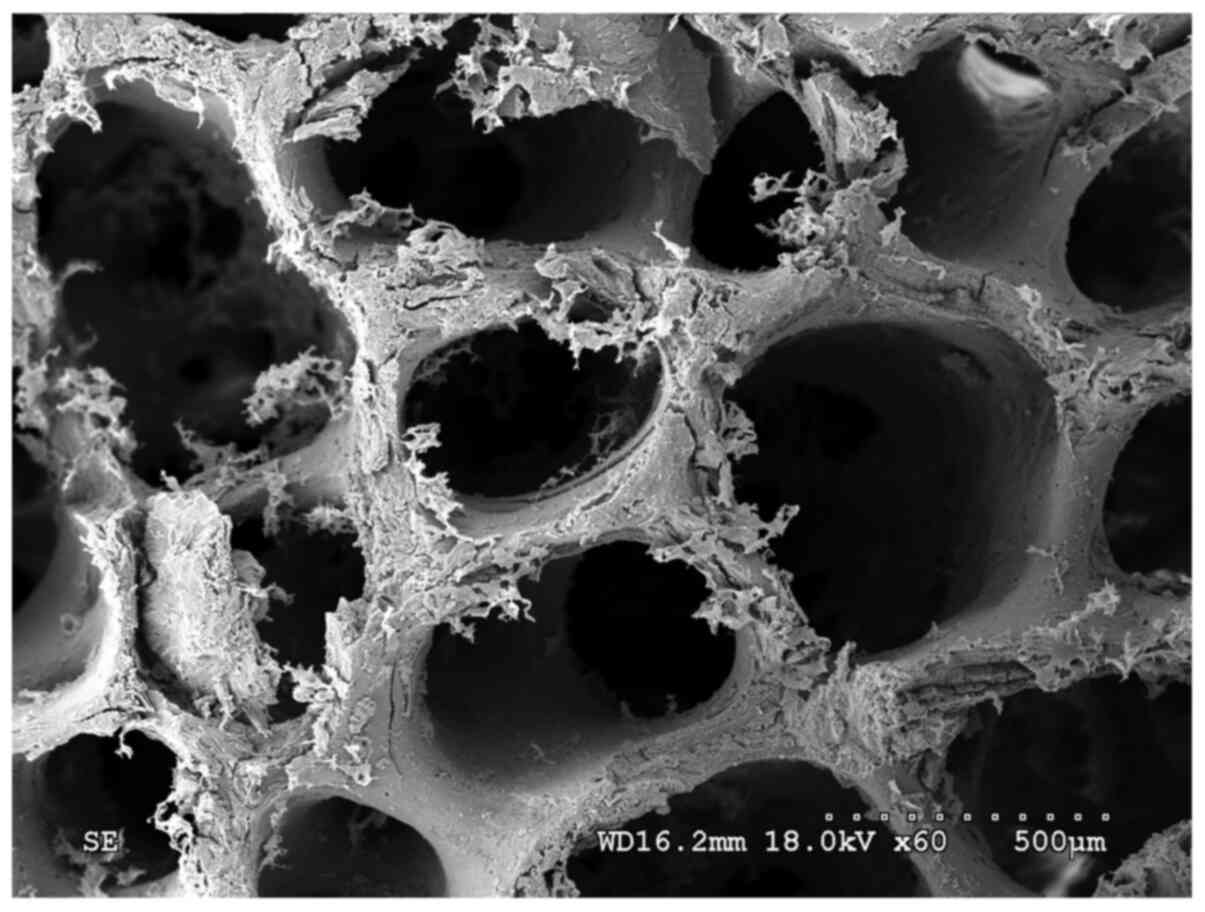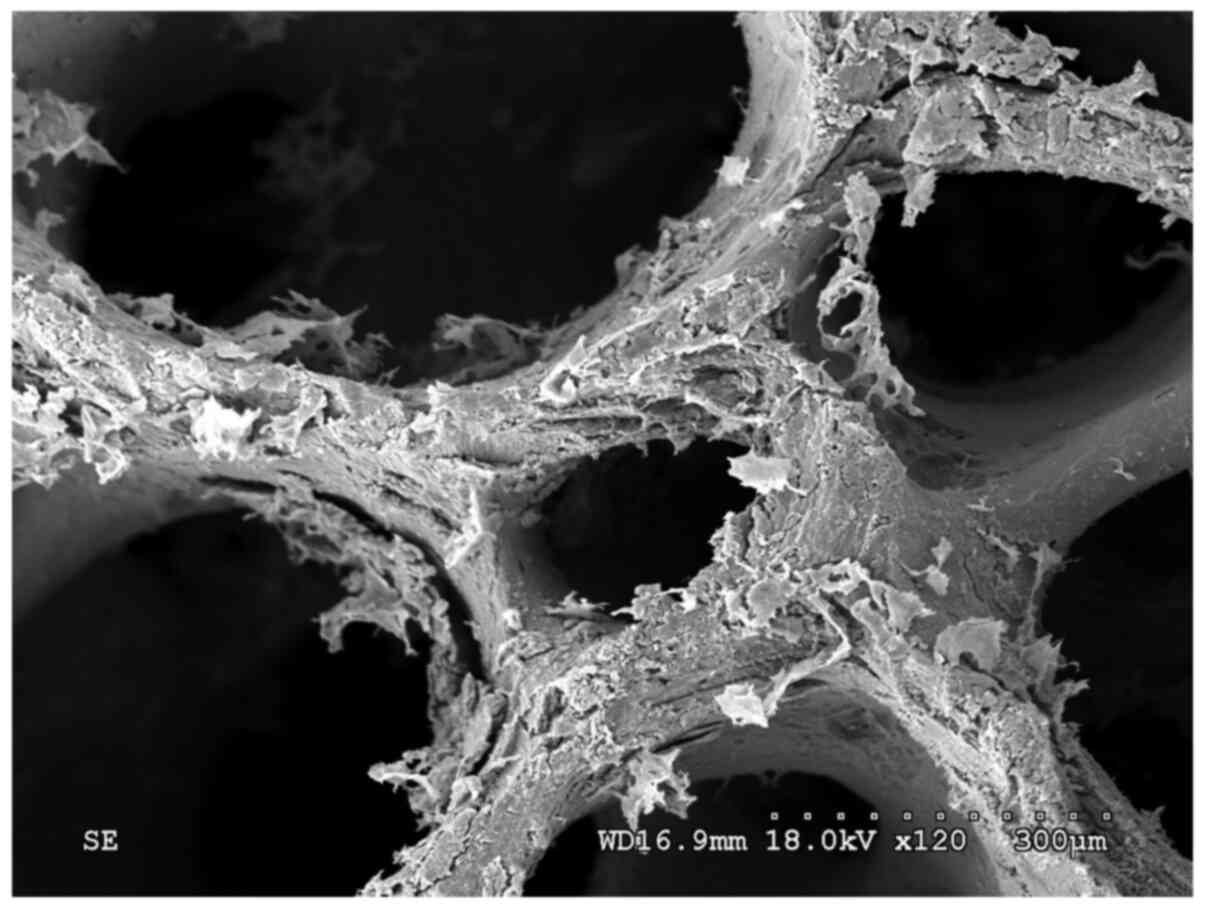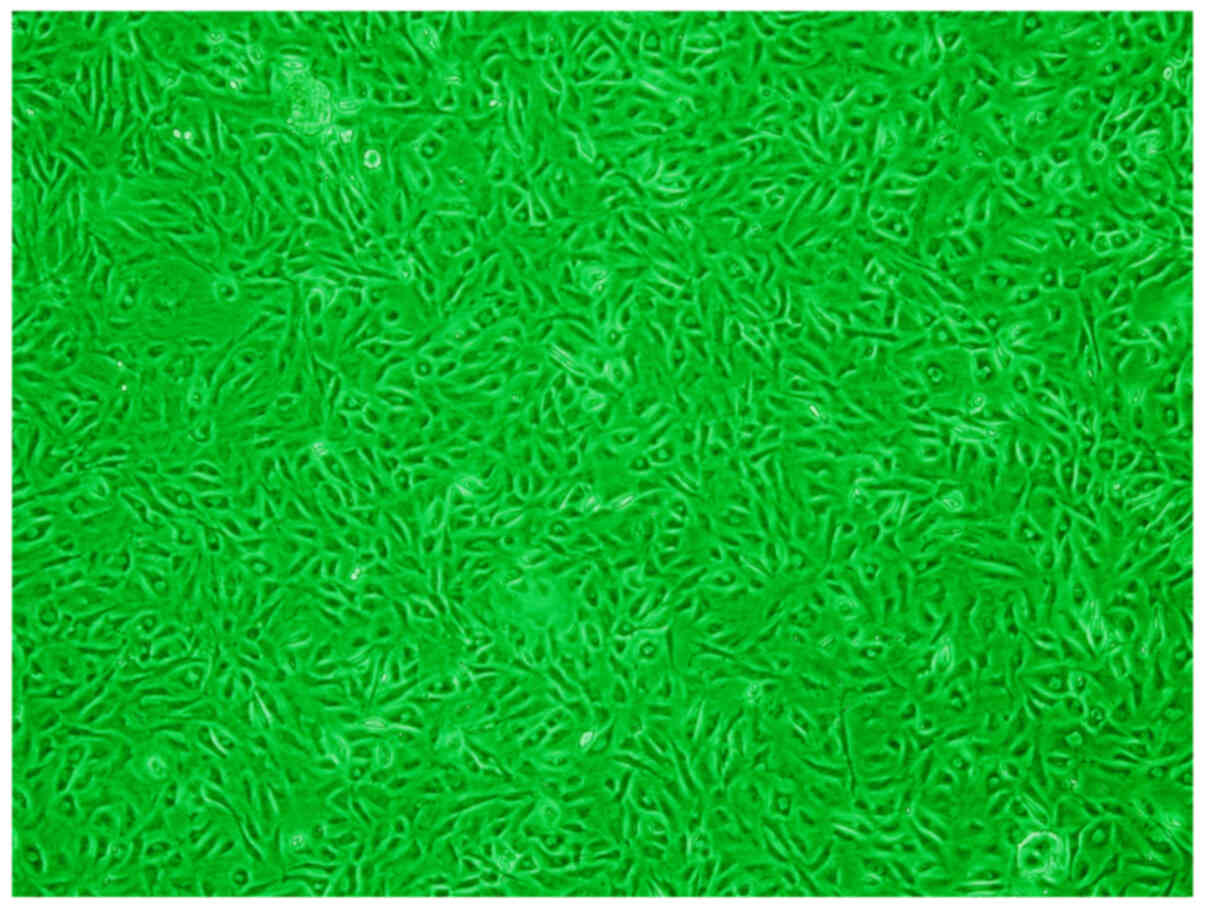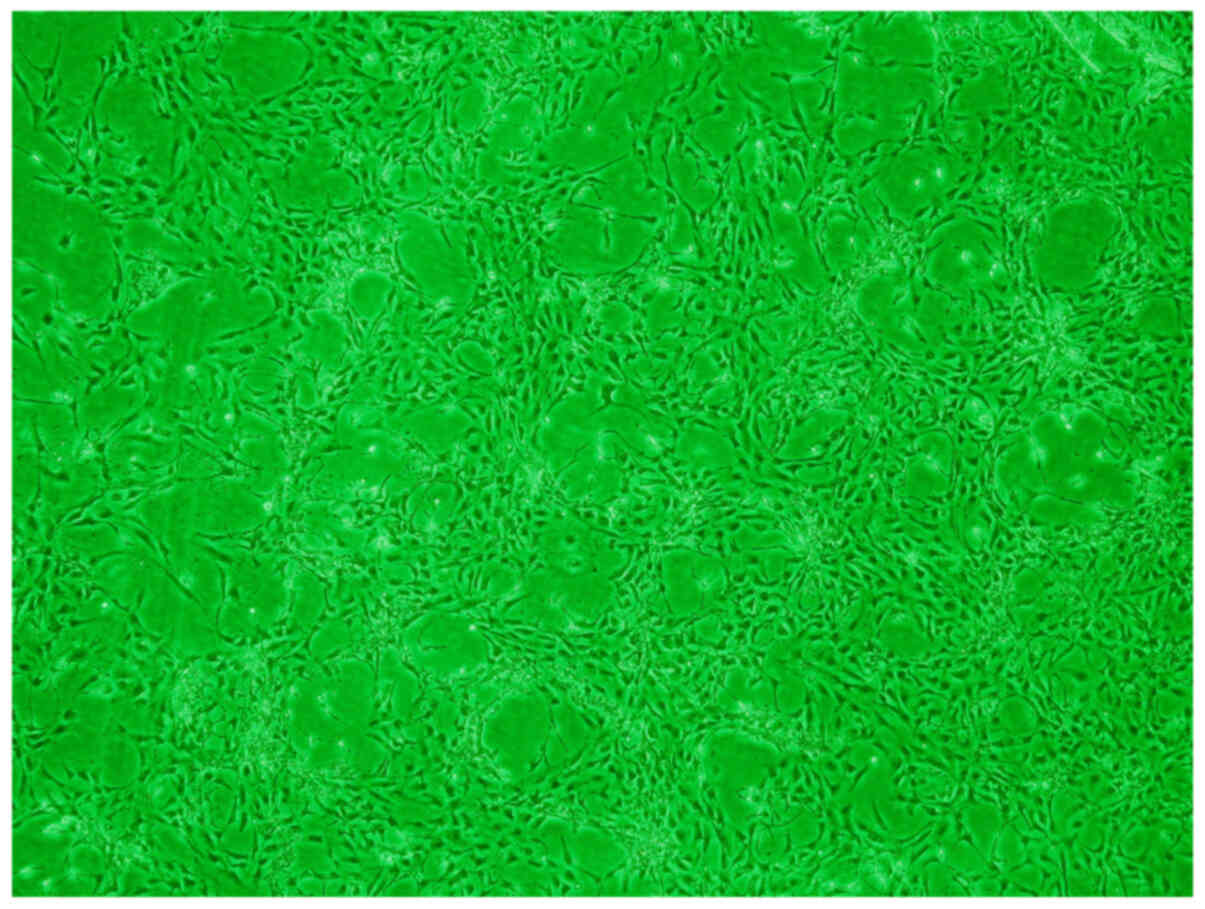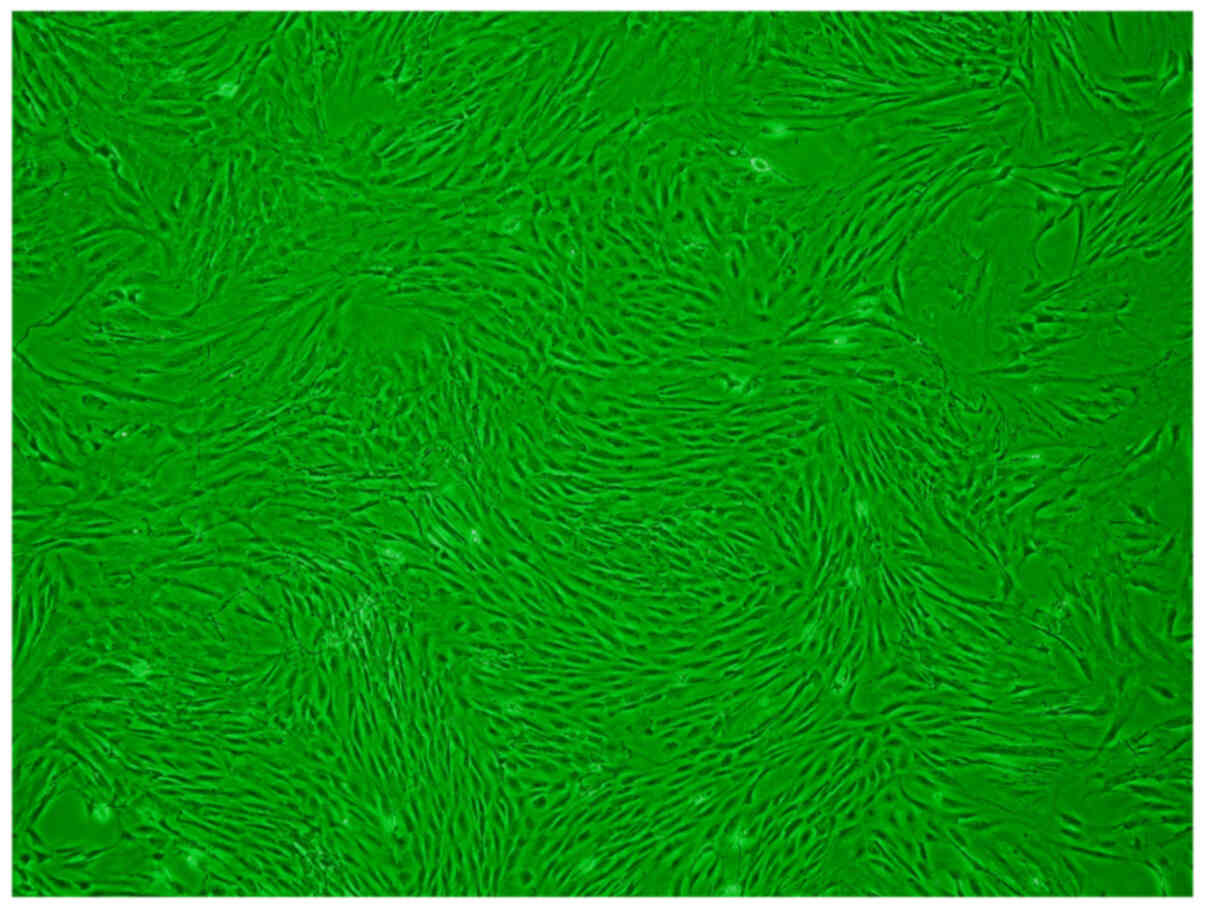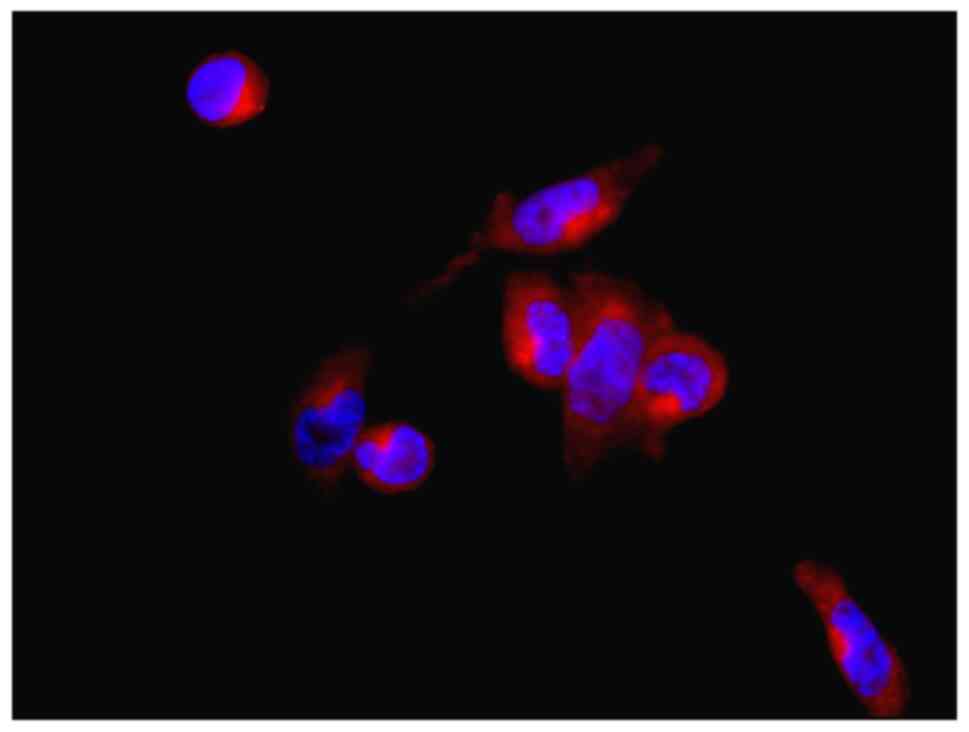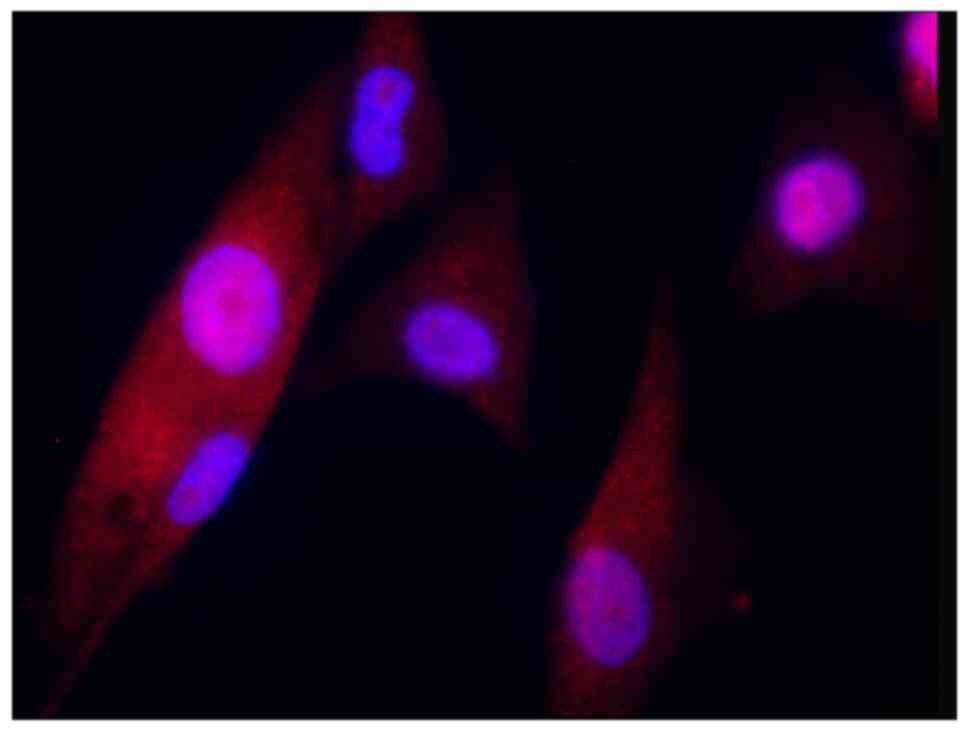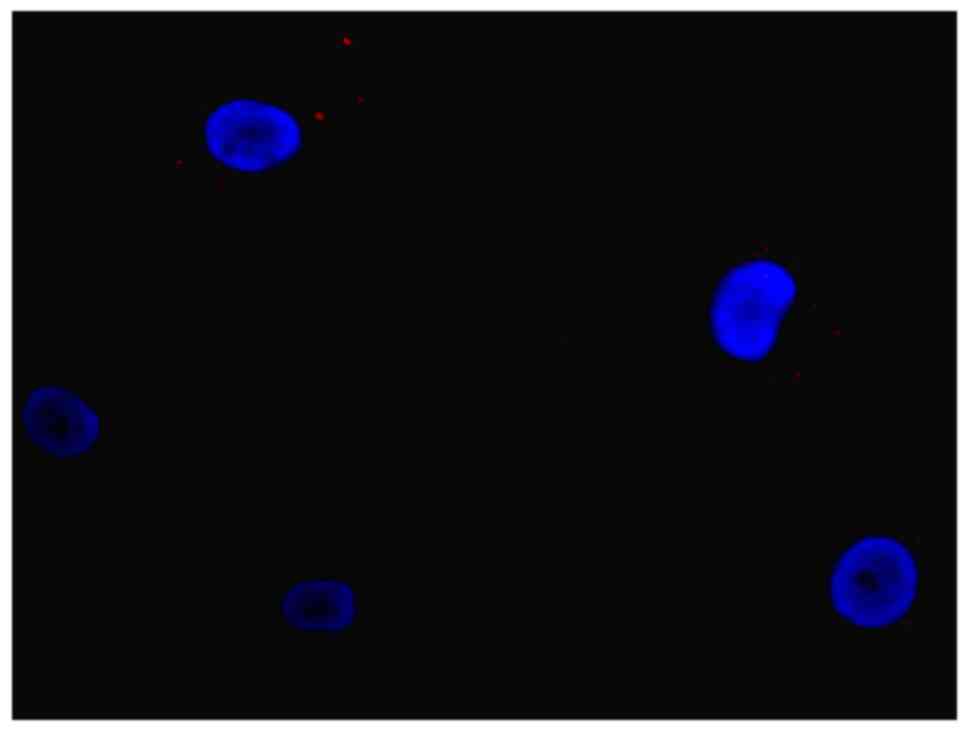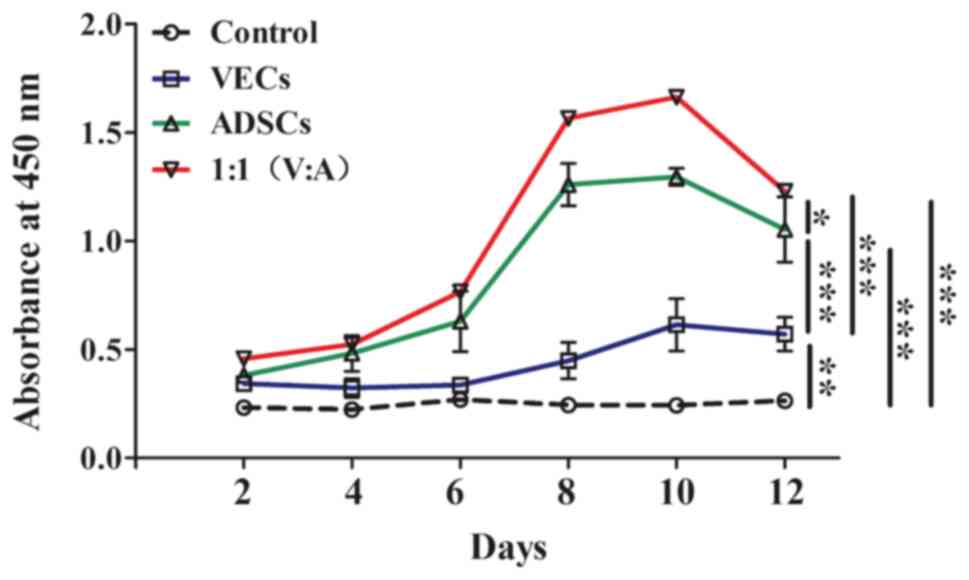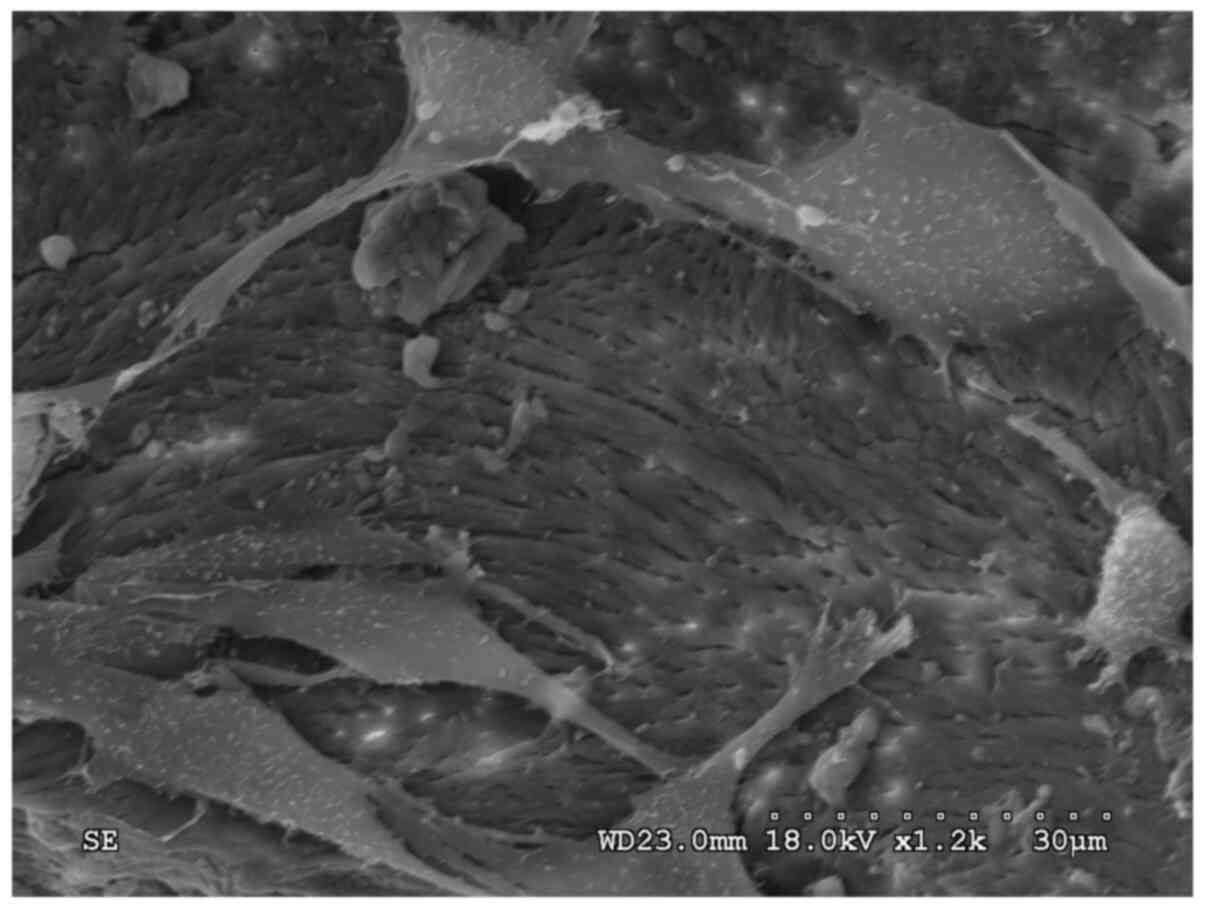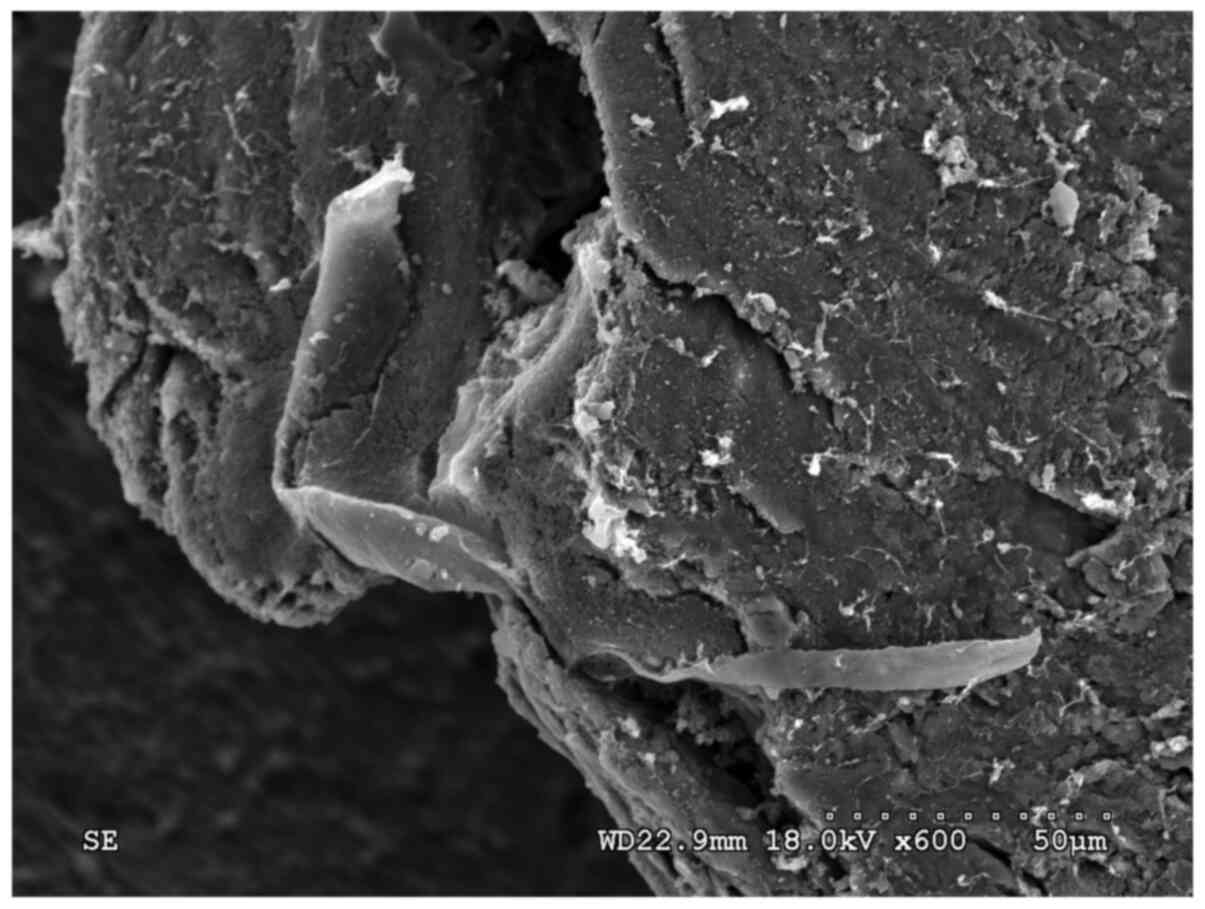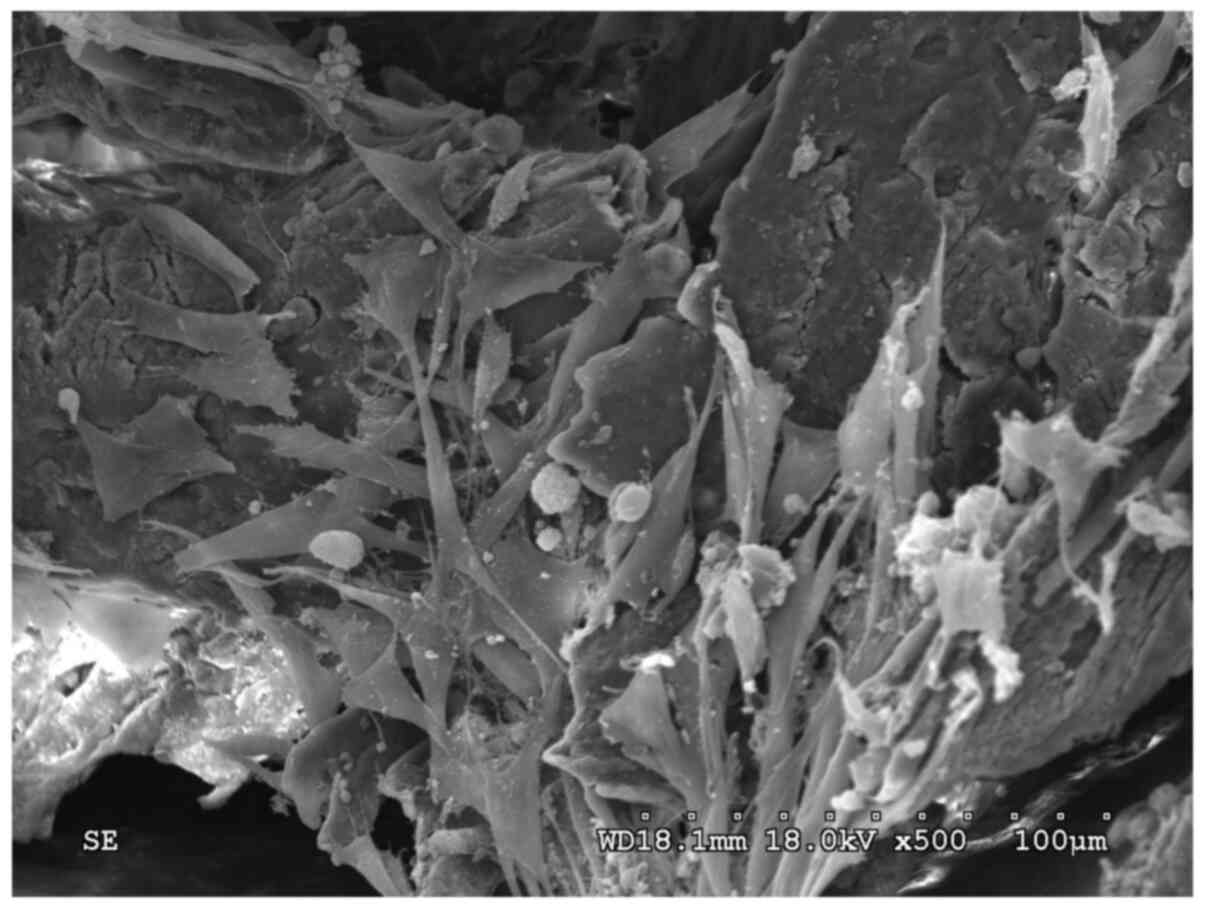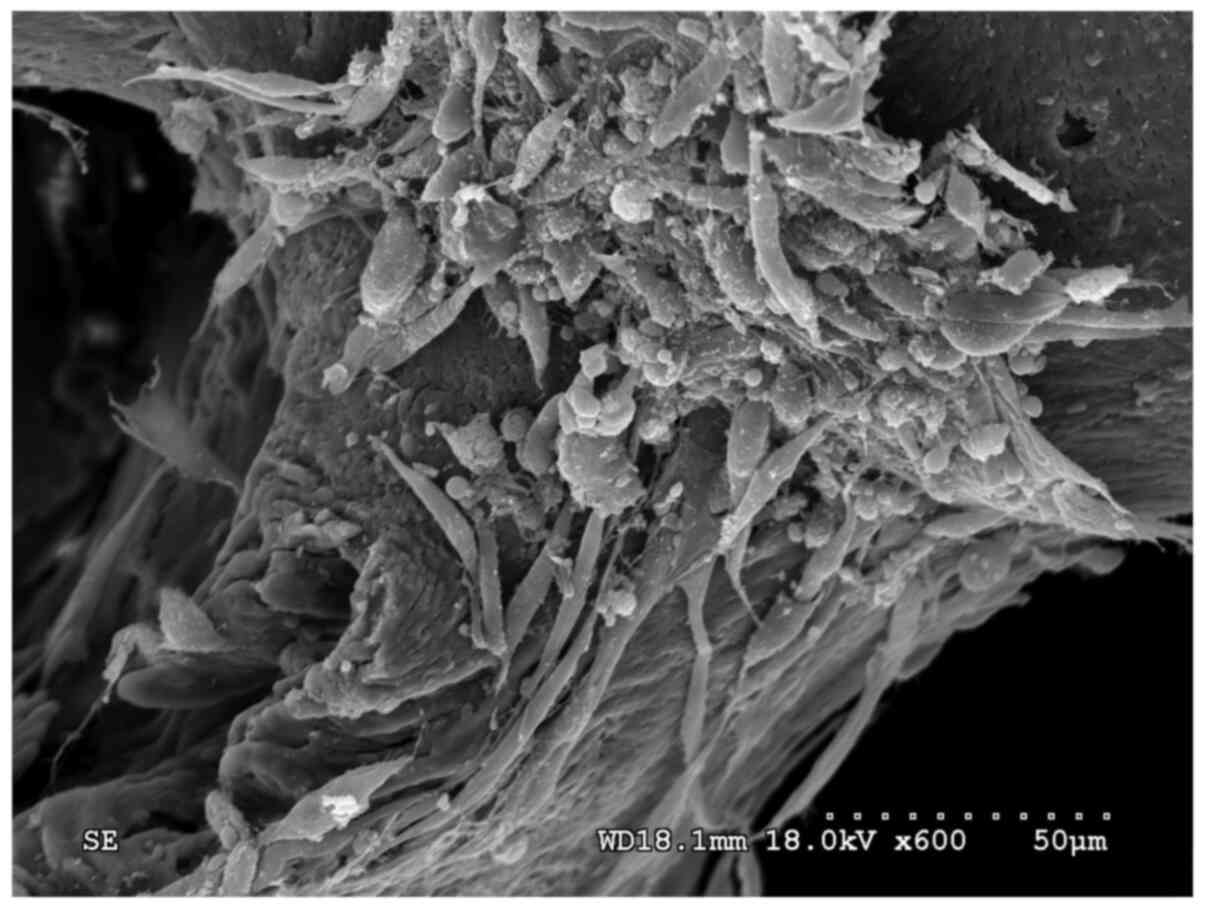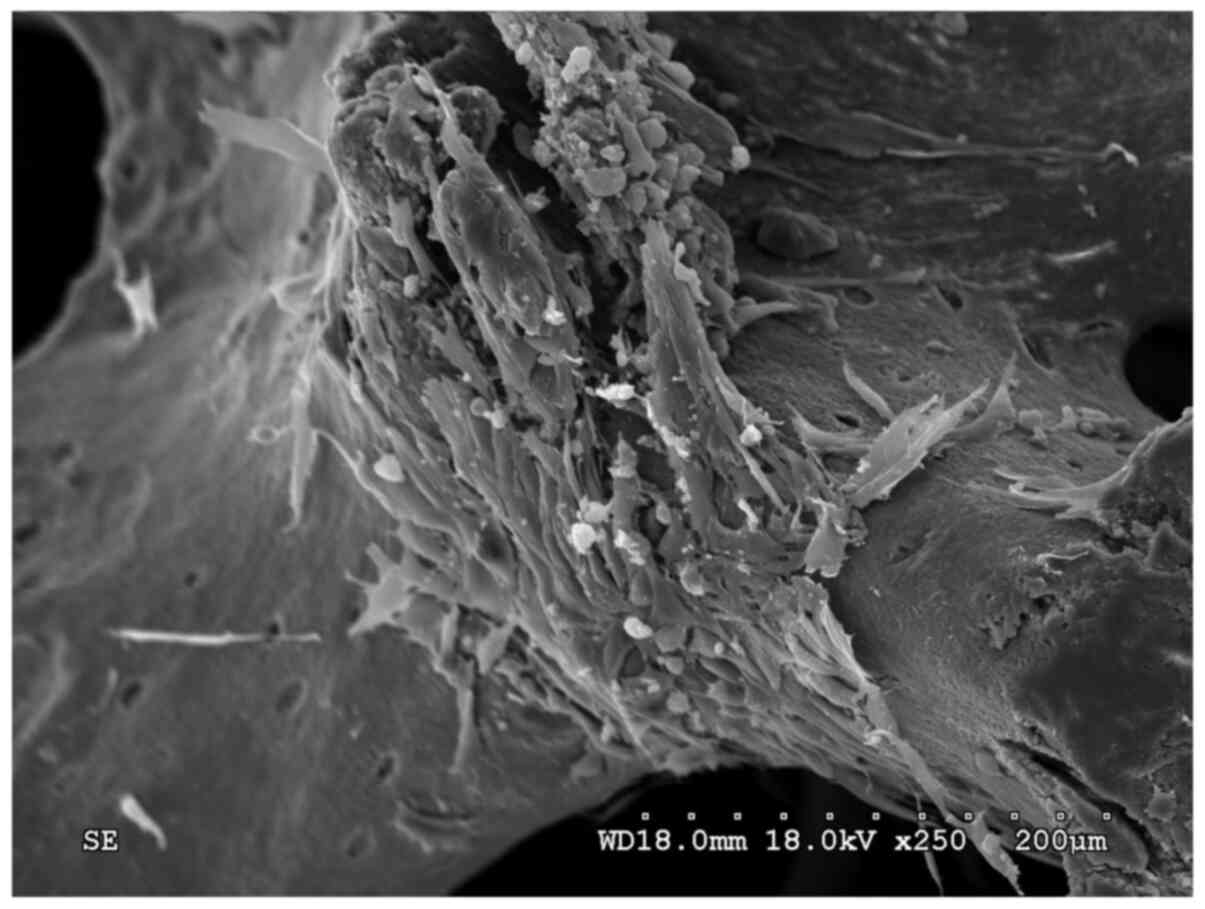|
1
|
Gurel PG, Torun KG and Hasirci V:
Influence of co-culture on osteogenesis and angiogenesis of bone
marrow mesenchymal stem cells and aortic endothelial cells.
Microvasc Res. 108:1–9. 2016. View Article : Google Scholar : PubMed/NCBI
|
|
2
|
Weyand B and Von SHP: Altered VEGF-A and
receptor mRNA expression profiles, and identification of VEGF144 in
foetal rat calvaria cells, in coculture with microvascular
endothelial cells. Cell Biol Int. 37:713–724. 2013. View Article : Google Scholar : PubMed/NCBI
|
|
3
|
Hu X, Neoh KG, Zhang J, Kang ET and Wang
W: Immobilization strategy for optimizing VEGF's concurrent
bioactivity towards endothelial cells and osteoblasts on implant
surfaces. Biomaterials. 33:8082–8093. 2012. View Article : Google Scholar : PubMed/NCBI
|
|
4
|
Geuze RE, Theyse LF, Kempen DH, Hazewinkel
HA, Kraak HY, Oner FC, Dhert WJ and Alblas J: A differential effect
of bone morphogenetic protein-2 and vascular endothelial growth
factor release timing on osteogenesis at ectopic and orthotopic
sites in a large-animal model. Tissue Eng Part A. 18:2052–2062.
2012. View Article : Google Scholar : PubMed/NCBI
|
|
5
|
Xiao C, Zhou H, Liu G, Zhang P, Fu Y, Gu
P, Hou H, Tang T and Fan X: Bone marrow stromal cells with a
combined expression of BMP-2 and VEGF-165 enhanced bone
regeneration. Biomed Mater. 6:0150132011. View Article : Google Scholar : PubMed/NCBI
|
|
6
|
Choong CS, Hutmacher DW and Triffitt JT:
Co-culture of bone marrow fibroblasts and endothelial cells on
modified polycaprolactone substrates for enhanced potentials in
bone tissue engineering. Tissue Eng. 12:2521–2531. 2006. View Article : Google Scholar : PubMed/NCBI
|
|
7
|
Zhao X, Liu L, Wang FK, Zhao DP, Dai XM
and Han XS: Coculture of vascular endothelial cells and
adipose-derived stem cells as a source for bone engineering. Ann
Plast Surg. 69:91–98. 2012. View Article : Google Scholar : PubMed/NCBI
|
|
8
|
Kim JY, Park CD, Lee JH, Lee CH, Do BR and
Lee AY: Co-culture of melanocytes with adipose-derived stem cells
as a potential substitute for co-culture with keratinocytes. Acta
Derm Venereol. 92:16–23. 2012. View Article : Google Scholar : PubMed/NCBI
|
|
9
|
Eltom A, Zhong G and Ameen M: Scaffold
techniques and designs in tissue engineering functions and
purposes: A review. Adv Mater Sci Eng. 2019:1–13. 2019. View Article : Google Scholar
|
|
10
|
Wang F, Zhang H, Li Y, Liu L, He C, Cai G
and Song E: Heterotopic osteogenesis study of tissue engineered
bone by co-culture of vascular endothelial cells and
adipose-derived stem cells. Zhongguo Xiu Fu Chong Jian Wai Ke Za
Zhi. 33:1310–1319. 2019.(In Chinese). PubMed/NCBI
|
|
11
|
Liu J, Zhou P, Long Y, Huang C and Chen D:
Repair of bone defects in rat radii with a composite of allogeneic
adipose-derived stem cells and heterogeneous deproteinized bone.
Stem Cell Res Ther. 9:792018. View Article : Google Scholar : PubMed/NCBI
|
|
12
|
Huang Y, Wu C, Zhang X, Chang J and Dai K:
Regulation of immune response by bioactive ions released from
silicate bioceramics for bone regeneration. Acta Biomater.
66:81–92. 2018. View Article : Google Scholar : PubMed/NCBI
|
|
13
|
Peng J, Chen L, Peng K, Chen X, Wu J, He Z
and Xiang Z: Bone marrow mesenchymal stem cells and endothelial
progenitor cells co-culture enhances large segment bone defect
repair. J Biomed Nanotechnol. 15:742–755. 2019. View Article : Google Scholar : PubMed/NCBI
|
|
14
|
Han X, Liu L, Wang F, Zhao X, Zhao D, Dai
X and Li Y: Reconstruction of tissue-engineered bone with bone
marrow mesenchymal stem cells and partially deproteinized bone in
vitro. Cell Biol Int. 36:1049–1053. 2012. View Article : Google Scholar : PubMed/NCBI
|
|
15
|
Wang FK, Yang G, Liu L, Li YL, Han R, Zhao
X and He C: Fibronectin improved the cytocompatibility of partially
deproteinized bone. J Biomater Tissue Eng. 9:534–536. 2019.
View Article : Google Scholar : PubMed/NCBI
|
|
16
|
Wu L, Zhao X, He B, Jiang J, Xie XJ and
Liu L: The possible roles of biological bone constructed with
peripheral blood derived EPCs and BMSCs in osteogenesis and
angiogenesis. Biomed Res Int. 2016:81689432016.PubMed/NCBI
|
|
17
|
National Research Council: Guide for the
Care and Use of Laboratory Animals. 8th edition. Washington, DC:
The National Academies Press; 2011, simplehttps://doi.org/10.17226/12910
|
|
18
|
Thrivikraman G, Athirasala A, Twohig C,
Boda SK and Bertassoni LE: Biomaterials for craniofacial bone
regeneration. Dent Clin North Am. 61:835–856. 2017. View Article : Google Scholar : PubMed/NCBI
|
|
19
|
Wang C, Li Y, Yang M, Zou Y, Liu H, Liang
Z, Yin Y, Niu G, Yan Z and Zhang B: Efficient differentiation of
bone marrow mesenchymal stem cells into endothelial cells in vitro.
Eur J Vasc Endovasc Surg. 55:257–265. 2018. View Article : Google Scholar : PubMed/NCBI
|
|
20
|
Ai WJ, Li J, Lin SM, Li W, Liu CZ and Lv
WM: R-Smad signaling-mediated VEGF expression coordinately
regulates endothelial cell differentiation of rat mesenchymal stem
cells. Stem Cells Dev. 24:1320–1331. 2015. View Article : Google Scholar : PubMed/NCBI
|
|
21
|
Berendsen AD and Olsen BR: How vascular
endothelial growth factor-A (VEGF) regulates differentiation of
mesenchymal stem cells. J Histochem Cytochem. 62:103–108. 2014.
View Article : Google Scholar : PubMed/NCBI
|
|
22
|
Priya N, Sarcar S, Majumdar AS and
SundarRaj S: Explant culture: A simple, reproducible, efficient and
economic technique for isolation of mesenchymal stromal cells from
human adipose tissue and lipoaspirate. J Tissue Eng Regen Med.
8:706–716. 2014. View Article : Google Scholar : PubMed/NCBI
|
|
23
|
Raposio E and Bertozzi N: Isolation of
ready-to-use adipose-derived stem Cell (ASC) pellet for clinical
applications and a comparative overview of alternate methods for
ASC isolation. Curr Protoc Stem Cell Biol. 41:1F.17.1–1F.17.12.
2017. View
Article : Google Scholar : PubMed/NCBI
|
|
24
|
Bajek A, Gurtowska N, Olkowska J,
Kazmierski L, Maj M and Drewa T: Adipose-derived stem cells as a
tool in cell-based therapies. Arch Immunol Ther Exp (Warsz).
64:443–454. 2016. View Article : Google Scholar : PubMed/NCBI
|
|
25
|
Wang F, Liu L, Li Y, Dai X, Li Y and Li Z:
Optimal condition of in vitro constructing tissue-engineered bone
with bone marrow stromal cells and partially deproteinised bone.
Zhongguo Zu Zhi Gong Cheng Yan Jiu. 33:6401–6405. 2008.(In
Chinese).
|
|
26
|
Randi AM, Smith KE and Castaman G: von
Willebrand factor regulation of blood vessel formation. Blood.
132:132–140. 2018. View Article : Google Scholar : PubMed/NCBI
|
|
27
|
Kawamoto K, Konno M, Nagano H, Nishikawa
S, Tomimaru Y, Akita H, Hama N, Wada H, Kobayashi S, Eguchi H, et
al: CD90-(Thy-1-) high selection enhances reprogramming capacity of
murine adipose-derived mesenchymal stem cells. Dis Marker.
35:573–579. 2013. View Article : Google Scholar
|
|
28
|
Wang F, Liu L, Zhao D, He X, Dai X and Li
Y and Li Y: Influence of co-culturing vascular endothelial cells
and adipose-derived stromal cells on osteogenic differentiation in
vitro. Zhongguo Xiu Fu Chong Jian Wai Ke Za Zhi. 24:399–405.
2010.(In Chinese). PubMed/NCBI
|
|
29
|
Aksel H and Huang GT: Combined effects of
vascular endothelial growth factor and bone morphogenetic protein 2
on odonto/osteogenic differentiation of human dental pulp stem
cells in vitro. J Endod. 43:930–935. 2017. View Article : Google Scholar : PubMed/NCBI
|
|
30
|
Ma XW, Cui DP and Zhao DW: Vascular
endothelial growth factor/bone morphogenetic protein-2 bone marrow
combined modification of the mesenchymal stem cells to repair the
avascular necrosis of the femoral head. Int J Clin Exp Med.
8:15528–15534. 2015.PubMed/NCBI
|
|
31
|
Akiyama I, Yoshino O, Osuga Y, Shi J,
Harada M, Koga K, Hirota Y, Hirata T, Fujii T, Saito S and Kozuma
S: Bone morphogenetic protein 7 increased vascular endothelial
growth factor (VEGF)-a expression in human granulosa cells and VEGF
receptor expression in endothelial cells. Reprod Sci. 21:477–482.
2014. View Article : Google Scholar : PubMed/NCBI
|
|
32
|
Wu PH, Chung HY, Wang JH, Shih JC, Kuo MY,
Chang PC, Huang YD, Wang PC and Chang CC: Amniotic membrane and
adipose-derived stem cell co-culture system enhances bone
regeneration in a rat periodontal defect model. J Formos Med Assoc.
115:186–194. 2016. View Article : Google Scholar : PubMed/NCBI
|
|
33
|
Gálisová A, Fábryová E, Sticová E,
Kosinová L, Jirátová M, Herynek V, Berková Z, Kříž J, Hájek M and
Jirák D: The optimal timing for pancreatic islet transplantation
into subcutaneous scaffolds assessed by multimodal imaging.
Contrast Media Mol Imaging. 2017:54184952017. View Article : Google Scholar : PubMed/NCBI
|
|
34
|
Lavender MD, Pang Z, Wallace CS, Niklason
LE and Truskey GA: A system for the direct co-culture of
endothelium on smooth muscle cells. Biomaterials. 26:4642–4653.
2005. View Article : Google Scholar : PubMed/NCBI
|
|
35
|
Pankov R and Yamada KM: Fibronectin at a
glance. J Cell Sci. 115:3861–3863. 2002. View Article : Google Scholar : PubMed/NCBI
|
|
36
|
Globus RK, Doty SB, Lull JC, Holmuhamedov
E, Humphries MJ and Damsky CH: Fibronectin is a survival factor for
differentiated osteoblasts. J Cell Sci. 111:1385–1393.
1998.PubMed/NCBI
|
|
37
|
Kawashita M, Hasegawa M, Kudo TA, Kanetaka
H, Miyazaki T and Hashimoto M: Effect of fibronectin adsorption on
osteoblastic cellular responses to hydroxyapatite and alumina.
Mater Sci Eng C Mater Biol Appl. 69:1268–1272. 2016. View Article : Google Scholar : PubMed/NCBI
|















